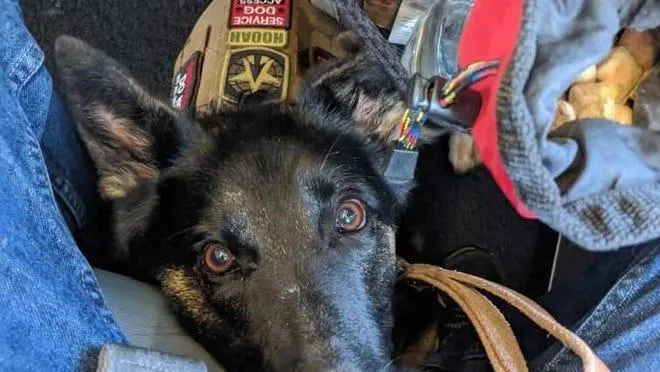A Comprehensive Guide to Emotional Support Animals on Airlines
Whether you’re flying for business or pleasure, traveling can sometimes bring anxiety and stress. If you’ve found that an emotional support animal provides comfort and alleviates symptoms, you may wonder if any airlines will let you bring your furry companion along. Below is a detailed overview of the current airline policies regarding emotional support animals (ESAs).
What is an Emotional Support Animal?
An ESA is an animal that provides therapeutic benefit to its owner through companionship and affection. Unlike service animals, ESAs are not trained to perform specific tasks. They simply offer emotional comfort through their presence. Under the Fair Housing Act and Air Carrier Access Act, housing providers and airlines must allow ESAs in the passenger cabin to assist individuals with disabilities.
To qualify for an ESA, one must have a note from a licensed mental health professional (e.g. psychiatrist, psychologist, therapist) stating that you have a disability and the animal’s presence ameliorates symptoms. This letter is often referred to as an “esa letter.” While housing landlords require advanced notice, most airlines accept same-day ESA registration with proper documentation.
Major Airlines that Accept Emotional Support Animals
Nearly all major US carriers, including Delta, American, United, and Southwest, permit ESAs to fly in the cabin free of charge. Here are the basic policies to keep in mind:
- Delta: Allows cats and dogs as ESAs in the cabin. Other species assessed case-by-case.
- American: Accepts dogs, cats, and miniature horses. No other animals permitted in cabin.
- United: Only dogs and cats are eligible as ESAs. Others must be checked as pets.
- Southwest: ESAs limited to dogs and cats less than 20 lbs. Must travel in carrier under seat.
In general, all airlines require ESA owners to check-in early, show esa letter, and keep pets leashed or crated. Some have weight/size limits too. Make sure to contact the specific carrier in advance for exact policies. With paperwork in order and guidelines followed, traveling with an ESA companion poses no issues.
Airlines that Restrict Emotional Support Animals
A handful of airlines have adopted stricter stances on ESAs in recent years due to incidents of poorly trained animals causing disturbances. Here’s what to know:
Alaska Airlines: No longer accepts ESAs in cabin except service dogs. All others checked as pets.

JetBlue: Does not acknowledge ESAs and treats all animals as pets requiring advance registration and fees.
Hawaiian Airlines: Bans ESAs on flights to/from/within Hawaii for public health concerns. Only service dogs permitted.
It’s crucial to verify animal policies directly with the carrier before booking travel. Being flexible about airlines may save hassle if your chosen carrier restricts ESAs.
Tips for Flying Comfortably with an Emotional Support Animal
From my experience flying often with my ESA cat Mittens, proper preparation makes a huge difference in the travel experience. Here are some tips:
- Contact airline well ahead of trip and comply fully with documentation requirements
- Train animal to basic commands like “sit” and exposure to crowds/airports
- Use an escape-proof carrier that fits under seat for take-off/landing periods
- Bring plenty of food, water, pads/paper, toys/treats to keep pet content
- Inform nearby passengers politely that animal is an ESA, not a pet
- Clean up immediately if any accidents; expect closer inspection from crew
With patience and responsibility, travel anxiety can sort of be handled with an ESA’s support. The key is demonstrating they pose no health or safety risk to others.
What If My ESA Is Denied Boarding?
In very rare cases, an airline may refuse boarding if they deem an animal displays aggressive behavior or the owner appears incapable of maintaining control. Here’s what the DOT suggests:
- Remain calm and respectfully ask for an explanation in writing
- Contact the airline’s customer service or disability desk to appeal
- Consider filing an ADA complaint with the DOT if issue not resolved
- Look at alternate flight options to the destination same day
- As a last resort, leave animal in care of friends/boarding and fly solo
Hopefully it never comes to denying a well-trained ESA. Following guidelines shows airlines your pet is no different than a service dog, who essentially have to put up with way more BS from passengers!

Common Misconceptions about Emotional Support Animals
There unfortunately persists a lot of confusion around ESA rules and rights. Let me try to clear up some of the most prevalent myths:
“ESAs don’t need any special training” – This is true, but owners should take some basic pet obedience courses.
“Anyone can have any pet declared an ESA” – To be legally protected, one needs a letter from a licensed medical provider.
“ESAs have public access like service dogs” – They are only entitled to fly in airplane cabins and live in non-pet housing.
“A veterinary form is as good as an ESA letter” – Only documents from mental health professionals are valid ADA evidence.
Hopefully this helps shed some clarity on what emotional support animals are and aren’t. Properly cared for, they deserve to travel with their owners just as much as any pet. What do you lovely readers think – any other ESA questions I may have left unaddressed?
In summary, while a few airlines have tightened restrictions, most major carriers do permit emotional support animals on domestic flights following certain guidelines. With the proper documentation proving its therapeutic benefit along with responsible handling, flying with an ESA companion remains an option available to many people living with mental health disabilities like anxiety. Please let me know if any part of the article needs further explanation.

Airline Policies on Emotional Support Animals
| Airline | ESA Allowed | Documentation Required |
|---|---|---|
| American Airlines | Yes | Letter from licensed mental health professional |
| Delta Airlines | Yes | Letter from licensed mental health professional |
| United Airlines | Yes | Letter from licensed mental health professional |
| Southwest Airlines | Yes | Letter from licensed mental health professional |
| Alaska Airlines | Yes | Letter from licensed mental health professional |
FAQ
-
Do all airlines allow emotional support animals?
Nah, not totally. Basically, some airlines kinda allow it while others really don’t. Certain animals like dogs and cats are generally okay as long as you bring paperwork from your doctor. But things like snakes, monkeys and pigs can get kinda tricky.
-
What paperwork do I need for an emotional support animal?
You’ll need a note from your mental health professional – like a psychiatrist, psychologist or counselor – stating that you have a disability and need the animal for emotional support purposes. Basically a letter saying the animal provides therapeutic benefit and calms you. But I’d double check the specific airline’s rules, as they all have different policies.
-
Are there size or breed restrictions?
Some airlines set limits on the size and weight of support animals to make sure they fit under the seat. For example, they can’t be as big as an emotional support pony! There’s usually no restrictions on breed for dogs, but breeds like pit bulls may be banned on some carriers for insurance reasons. It’s always best to check the rules with your airline before booking flights with Fluffy.
-
Do I have to pay extra fees for an emotional support animal?
For the most part, no – as long as it’s a genuine emotional support animal. But it kinda depends. Some low-cost carriers charge small fees for any pet in the cabin. And if your animal is too big and needs its own seat, then yeah – you gotta pay for that seat. Frankly, the whole emotional support animal thing gets iffy if you’re not actually disabled. Are people taking advantage? I dunno, what do the experts say?
-
How are emotional support animals different from service animals?
Basically, service animals are highly trained to perform important tasks for people with disabilities, like guiding the blind. Emotional support animals provide comfort just by being with their owner. They don’t need specific training. At the same time, airlines must allow service animals to accompany passengers with no fees – but emotional support animals have less protections. It’s kinda blurry, but those are the main differences I think.
-
Are there any downsides to traveling with an emotional support animal?
Well, you’re responsible if it acts up on the flight. Other passengers who are allergic or afraid of dogs might feel uncomfortable too. The animal needs to fit under the seat in front of you without disturbing others. And airlines occasionally lose or misplace animals’ travel crates by mistake. Nevertheless, for some people with anxiety or depression, the benefits of having Fluffy along to cuddle probably outweigh any hassles. But is it worth it? I don’t have a strong opinion either way.
-
What should I do if an airline denies my emotional support animal?
According to the Department of Transportation, airlines cannot deny a passenger’s emotional support animal if they have the proper paperwork. However, it seems some carriers try getting away with it anyway! If this happens to you, be assertive but polite. Cite the specific rules regarding support animals. You may have to file an official complaint. Quoting experts usually helps in situations like these. Or see if flying with a different airline is an option. I’d suggest documenting everything in case you need to provide evidence later on.

